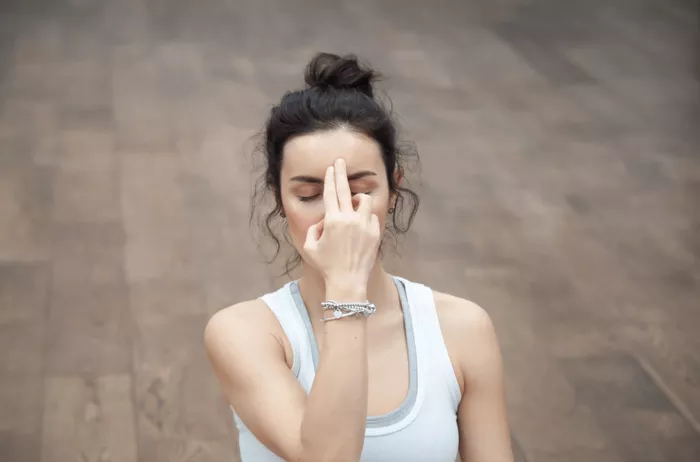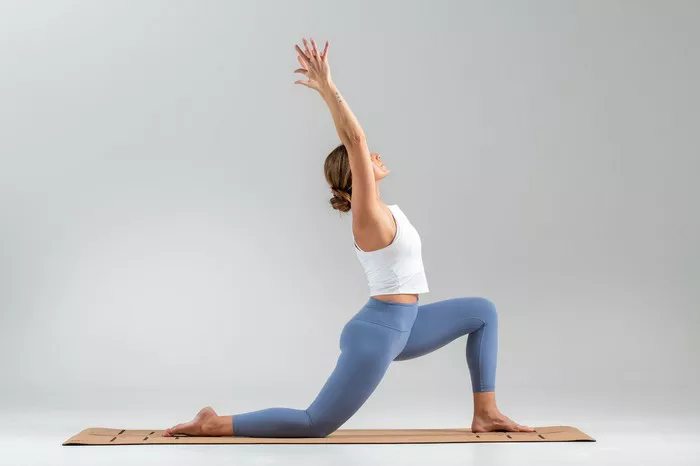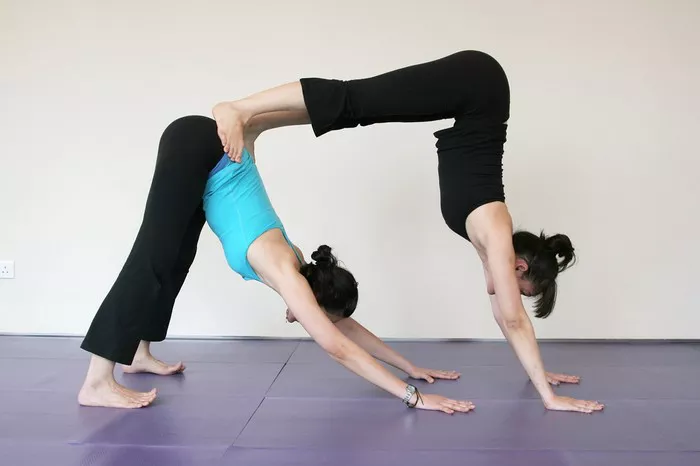Stomach gas, often accompanied by bloating and discomfort, is a common gastrointestinal issue affecting millions worldwide. While various factors contribute to its occurrence, such as diet, stress, and digestive disorders, finding effective relief is crucial for enhancing quality of life. Yoga, with its focus on controlled breathing, mindful movement, and gentle stretches, offers a non-invasive approach to managing stomach gas. In this article, we delve into precise yoga poses tailored to target and alleviate this discomfort, providing practical guidance for individuals seeking relief.
1. Pawanmuktasana (Wind-Relieving Pose)
Pawanmuktasana, aptly named the Wind-Relieving Pose, is renowned for its effectiveness in releasing trapped gas from the digestive system.
Procedure:
- Lie flat on your back (supine position) with arms resting alongside your body and legs extended.
- Inhale deeply.
- Exhale as you bend your knees toward your chest.
- Wrap your arms around your knees and clasp your hands together.
- As you inhale again, lift your head off the ground and bring your nose toward your knees.
- Hold the posture for 15-30 seconds while maintaining steady breathing.
- Exhale as you release your knees and head back to the starting position.
2. Apanasana (Knees-to-Chest Pose)
Apanasana, also known as the Knees-to-Chest Pose, gently massages the abdominal organs, facilitating the expulsion of gas and relieving bloating.
Procedure:
- Begin in the supine position with arms at your sides and legs extended.
- Inhale deeply.
- Exhale as you draw both knees toward your chest.
- Clasp your hands around your knees or shins.
- Keep your back and tailbone pressed against the floor.
- Hold the pose for 15-30 seconds, breathing deeply and evenly.
- Release the pose by exhaling as you release your knees and return to the starting position.
3. Balasana (Child’s Pose)
Balasana, or Child’s Pose, provides gentle compression to the abdomen, aiding in the stimulation of digestion and the release of trapped gas.
Procedure:
- Start on your hands and knees in a tabletop position, with wrists under shoulders and knees under hips.
- Inhale deeply.
- Exhale as you sit back on your heels, lowering your buttocks toward your heels and extending your arms forward.
- Rest your forehead on the mat and relax your neck and shoulders.
- Keep your arms active by pressing your palms into the floor.
- Hold the pose for 30-60 seconds, breathing deeply into the back and sides of your body.
- To release, gently walk your hands back toward your body and come back to a seated position.
4. Supine Twist
The Supine Twist is a gentle spinal twist that aids in the release of gas and tension from the abdominal area.
Procedure:
- Lie flat on your back with arms extended out to the sides in a T position.
- Bend your knees and draw them toward your chest.
- Exhale as you drop both knees to the right side of your body, keeping them stacked.
- Turn your head to the left, gazing toward your left hand.
- Keep both shoulders grounded on the mat.
- Hold the twist for 15-30 seconds, breathing deeply and allowing the twist to gently massage the abdomen.
- Inhale as you return your knees to the center, then exhale as you repeat the twist on the opposite side.
- Repeat the sequence 2-3 times on each side.
5. Marjariasana-Bitilasana (Cat-Cow Pose)
The dynamic movement of Cat-Cow Pose massages the abdominal organs, enhances circulation, and promotes digestive function, aiding in the alleviation of stomach gas.
Procedure:
- Begin on your hands and knees in a tabletop position, with wrists under shoulders and knees under hips.
- Inhale as you arch your back, lowering your belly toward the mat, and lifting your head and tailbone towards the ceiling (Cow Pose).
- Exhale as you round your spine, tucking your chin to your chest, and drawing your belly button toward your spine (Cat Pose).
- Continue flowing between Cat and Cow Poses, synchronizing movement with breath for 5-10 rounds.
6. Ardha Matsyendrasana (Half Lord of the Fishes Pose)
Ardha Matsyendrasana, or Half Lord of the Fishes Pose, stimulates digestion by twisting the abdominal region, thereby aiding in the elimination of gas and bloating.
Procedure:
- Sit on the floor with legs extended in front of you.
- Bend your knees and place your feet flat on the floor.
- Slide your left foot under your right leg, placing it alongside your right hip.
- Cross your right foot over your left knee, planting it firmly on the floor.
- Inhale as you lengthen your spine.
- Exhale as you twist your torso to the right, placing your left elbow on the outside of your right knee.
- Place your right hand on the floor behind you for support.
- Hold the twist for 15-30 seconds while maintaining steady breathing.
- Inhale to release the twist, then repeat on the opposite side.
7. Dhanurasana (Bow Pose)
Dhanurasana, also known as Bow Pose, stretches the entire front of the body, including the abdomen, while stimulating digestion and relieving gas.
Procedure:
- Lie flat on your stomach with arms alongside your body and legs extended.
- Bend your knees and bring your heels toward your buttocks.
- Reach back with your hands and grasp your ankles.
- Inhale as you lift your chest and thighs off the mat, creating a bow shape with your body.
- Keep your gaze forward and maintain a gentle smile on your face.
- Hold the pose for 15-30 seconds, breathing deeply into the abdomen.
- Exhale as you gently release the pose, lowering your chest and thighs back to the mat.
Conclusion
Incorporating these precise yoga poses into your daily routine can significantly alleviate stomach gas and discomfort. However, it’s essential to listen to your body and practice within your comfort level. For individuals with pre-existing medical conditions or severe gastrointestinal issues, consulting a healthcare professional before starting any new exercise regimen is advisable. With consistent practice and mindfulness, these targeted yoga poses offer a natural and effective way to promote digestive health and enhance overall well-being.
























